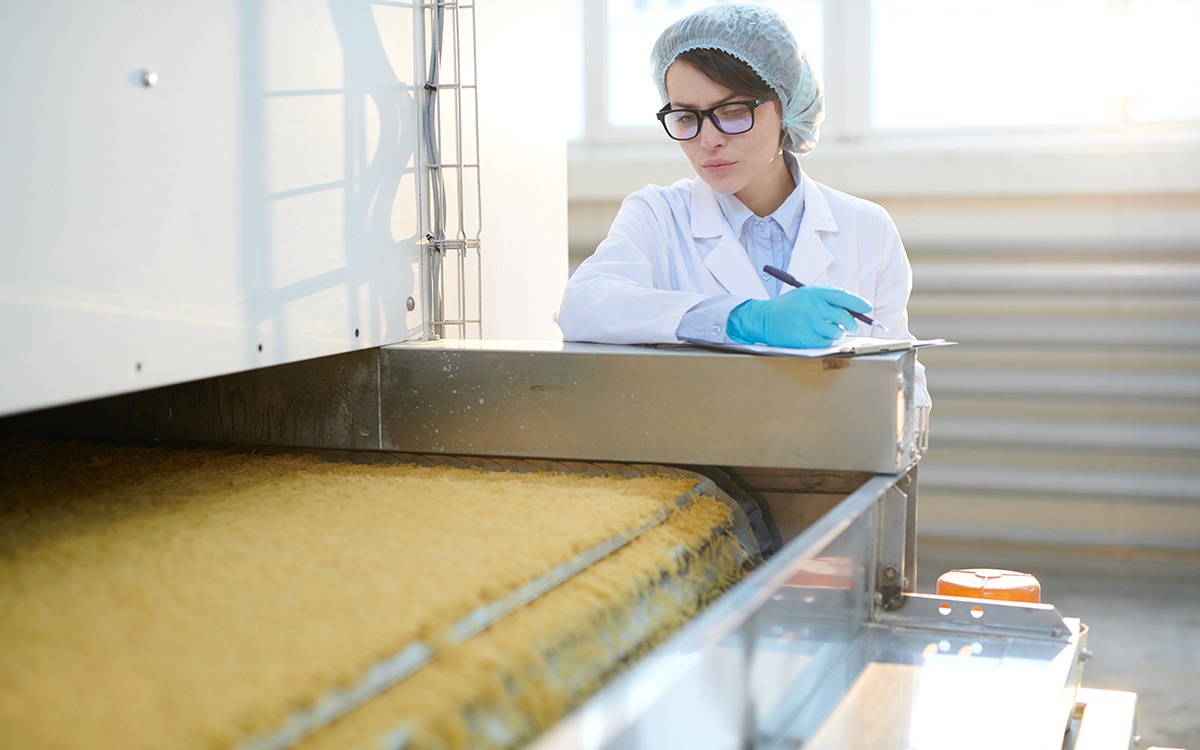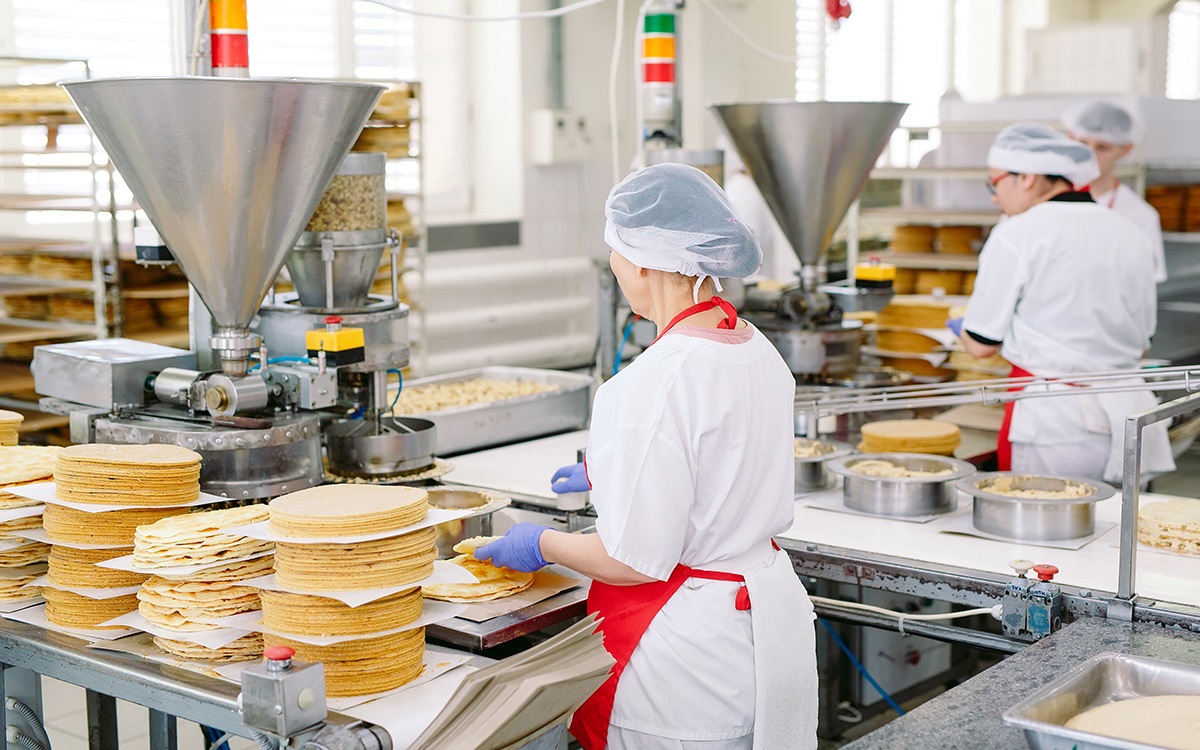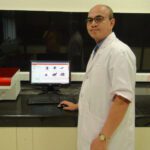A smart capsule of bacteria has been waiting for lovely environmental circumstances since…
Endospores are among the most challenging foodborne disease-causing microorganisms to eliminate, as conventional methods like disinfection, sanitization, and antibiotics are often ineffective against them. While procedures like steam sterilization can be effective, they are not suitable for heat-sensitive food ingredients, making it difficult to eradicate these endospore-bearing microorganisms. Nevertheless, adherence to Good Manufacturing Practices (GMP) is crucial to minimize the risk factors associated with such foods.
Endospore-bearing bacteria pose substantial challenges in agriculture and food production due to their remarkable resilience and ability to endure extreme environmental conditions. Some of the endospore-forming bacteria commonly found in food include Bacillus cereus, Bacillus anthracis, Bacillus thuringiensis, Clostridium perfringens, Clostridium botulinum, and Clostridium tetani, among others. However, endospore generation has not been documented in the Archaea domain of life.

What are the challenges of endospore-bearing food-poising bacteria?
Resistance to Heat and Chemicals: Endospores formed by bacteria like Clostridium and Bacillus are very resistant to heat, desiccation, chemicals, and other harsh environmental conditions. Because of their resilience, traditional food processing such as heat treatment and chemical disinfection are ineffective.
Biofilms formation: Bacteria can build biofilms on numerous surfaces in food processing environments, which protect additional roofs to serve endospore reservoirs. Biofilms increases the bacterial resistance to sanitizers and disinfectants several times thus helping them survive in food-producing facilities for a long time.
Cross-Contamination: Endospores are easily transmitted throughout food processing facilities due to cross-contamination. Even trace amounts of infected material can cause extensive contamination of food goods, equipment, and surfaces.
Agricultural systems: Farming systems are complex, with stages ranging from production to processing, packing, and distribution, all of which present a potential for contamination by endospore-bearing bacteria. Controlling these microorganisms necessitates extensive methods throughout the food supply chain.
Lack of Effective Antimicrobial Agents: Traditional antimicrobial agents may be ineffective against bacterial endospores. Developing innovative antimicrobial agents or treatments that selectively target endospores without loss of food quality, flavour, and texture is a challenging task.
Regulatory Compliance : Meeting regulatory criteria for food safety and cleanliness poses extra hurdles. Food manufacturers must follow tight restrictions and procedures to avoid foodborne illnesses caused by endospore-forming bacteria.
How could we remove endospore-bearing food-poising bacteria from food and agricultural products?
Endospore-bearing food poisoning bacteria must be removed from agriculture and food products using a combination of preventive action, appropriate sanitation procedures, and targeted interventions across the food production and processing chain. Mitigating endospore infection in agricultural and food items is critical to ensuring food safety. Here are a few techniques for reducing the presence of these microorganisms.

Good Agricultural Practices (GAPs)
Adopt proper soil management practices to reduce endospore contamination, such as regular soil testing, crop rotation, and using clean irrigation water. Maintain hygiene and sanitation during planting, harvesting, and crop handling to minimize spore transmission from soil to produce. Educate agricultural and food production workers about endospore risks and proper handling techniques

Processing and Storage
Heat treatment applied with proper cooking, pasteurization, and sterilization procedures are required. Endospores are destroyed by heat, which occurs through a rapid cycle of heating and cooling. Food products require adequate storage conditions (such as low temperatures and humidity) to prevent spore formation.

Equipment Hygiene
Cleaning and Sanitation, in this process equipment should be cleaned and sanitized regularly. Cleaning and Sanitization process shall be validated. Spores can adhere to surfaces, causing cross-contamination. Avoid dead zones which prefer to design your equipment to minimize regions where spores can accumulate.

Quality Control Measures
Implementing robust quality assurance programs, including regular testing for microbial contamination and adherence to food safety standards and regulations. Conducting environmental monitoring to identify and address potential sources of contamination within processing facilities.

High throughput modern technology approach:
Mitigating the threat of endospore-bearing bacteria in the food industry necessitates a multifaceted approach that involves cutting-edge technologies and collaborative efforts from various stakeholders. Innovative spore inactivation techniques such as high-pressure processing, pulsed electric fields, and irradiation are being extensively explored. Additionally, biological control methods that encourage the proliferation of beneficial bacteria to outcompete or inhibit endospore-formers offer a promising avenue. The strategic incorporation of natural or synthetic preservatives can also play a pivotal role in inhibiting spore germination and proliferation.
To effectively combat this persistent challenge, a coordinated effort involving food producers, regulatory agencies, researchers, and other key stakeholders is imperative. Comprehensive strategies should encompass improved sanitation protocols, robust implementation of HACCP (Hazard Analysis and Critical Control Points) plans, investments in advanced food processing and preservation technologies, and extensive research to deepen our understanding of the behavior and ecology of endospore-bearing bacteria in food systems.
By embracing a synergistic approach that harnesses the power of innovation, collaboration, and knowledge-sharing, the food industry can fortify its defenses against the formidable threat posed by endospore-forming pathogens. This proactive stance not only safeguards consumer health but also reinforces consumer trust and confidence in the safety and quality of the food supply chain.

Hurdles technique for microorganism control in food products
Pioneered by Leistner in 2000, the ‘hurdle technology’ is an intelligent approach to effectively manage microorganisms in food products. It employs a strategic combination of preservative ‘hurdles’ that synergistically limit microbial proliferation while extending shelf life without compromising food quality, flavor, or texture. These hurdles encompass pH adjustment, temperature control, water activity reduction, incorporation of preservatives, specialized packaging methods, and high-pressure processing.
By integrating multiple hurdles, each contributing a partial inhibitory effect on microbes, the overall efficacy of microbial control is significantly amplified. For instance, lowering the pH creates an acidic environment that hinders the growth of certain bacteria, while simultaneously decreasing the water activity further restricts microbial reproduction. This multi-hurdle approach not only bolsters microbiological safety but also minimizes the need for excessive levels of any single preservative, which could potentially compromise taste or raise health concerns.
The hurdle technology offers a comprehensive and innovative strategy to effectively control microbes in food products, ensuring optimal safety and quality are maintained throughout the entire shelf life. This cutting-edge technology is rapidly gaining traction across the food industry as a sustainable solution to combat foodborne pathogens and extend product freshness.

What Cultivator Phyto Lab can help your brand products’ food safety compliances?
Cultivator Phyto Lab boasts a state-of-the-art microbiology department dedicated to ensuring the food safety compliance of your brand products. Our lab meticulously examines raw food to finished products with a focus on reliability, rapid turnaround times, and cost-effectiveness. Currently, we offer a comprehensive range of microbiological tests, including analyses for Bacillus cereus, Clostridium perfringens, and other non-endospore hazardous microbes.
In addition, we conduct on-site environmental monitoring at food manufacturing facilities, swab testing, cleaning and sanitization validation, and more. Our cutting-edge facilities and team of expert FSSAI-approved food analysts ensure precise and quality analysis, allowing us to maintain the highest levels of safety and quality assurance. Cultivator Phyto Lab conducts extensive microbiological testing to assure the quality of your food products and protect consumer health.
Partner with Cultivator Phyto Lab today to safeguard your brand’s reputation and ensure regulatory compliance. Contact us to discuss your food safety testing requirements and experience our unparalleled commitment to excellence.
Authors

Dr. Sanjoy Gupta (Ph.D)
Senior Officer- Training and Capacity Building
Dr. Sanjoy Gupta is a seasoned researcher with 13 years of experience across plant biotechnology, health science, nutrition, phytoplankton, and botanical studies. He has conducted research at reputed institutions like CSIR IIP, BSI, NIOT, and Cultivator Natural Products. With over a dozen published articles in national/international journals and thoughtful blog contributions, Dr. Gupta’s multidisciplinary expertise advances knowledge in holistic wellness and scientific innovation.

Bhaskar Ashish
Fssai Approved Food Analyst
Bhaskar Ashish, an M.Sc. in Microbiology with 95.49% in GATE (Life Sciences) and FSSAI-approved food analyst certification, heads CPL’s Microbiology Department. His vast research experience spans NICED (DBT, India) and molecular biology as a DBT Fellow. Adept in microbiological testing, GMO detection, and successful regulatory audits, his scientific blogging and passion fuel progress in microbiology.
Reference :
- https://link.springer.com/chapter/10.1007/978-3-642-19577-8_7
- https://www.mdpi.com/2079-6382/12/2/248
- https://link.springer.com/chapter/10.1007/978-3-319-44409-3_10
- https://www.ncbi.nlm.nih.gov/pmc/articles/PMC9227780/pdf/microorganisms-10-01108.pdf
- https://www.fao.org/3/i6677e/i6677e.pdf
- https://www.ncbi.nlm.nih.gov/pmc/articles/PMC7353510/pdf/foods-09-00699.pdf

